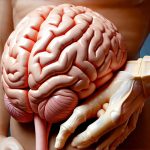The intricate relationship between our gut microbiota – the trillions of microorganisms residing in our digestive tract – and our eating behavior is rapidly emerging as a crucial area of scientific inquiry. For decades, hunger and satiety were largely attributed to hormonal signals originating from the stomach and brain, responding to nutrient availability and energy needs. However, we now understand that these physiological processes are profoundly influenced by the complex ecosystem within our gut. This microbial community doesn’t merely passively respond to what we eat; it actively shapes how we perceive hunger, experience satiety, and ultimately, derive satisfaction from meals. Understanding this bidirectional communication pathway is key to addressing modern challenges related to appetite regulation, weight management, and overall dietary health.
The composition of our gut microbiota – the specific types and abundance of bacteria, archaea, fungi, and viruses present – is uniquely individual, determined by a blend of genetic predisposition, early-life experiences (like mode of birth and infant feeding), diet, geographical location, and lifestyle factors. This personalized microbial fingerprint significantly impacts how efficiently we extract energy from food, synthesize essential nutrients, modulate inflammation, and even influence our brain activity via the gut-brain axis – a complex network involving neural, hormonal, and immunological signaling pathways. Consequently, imbalances in this ecosystem, known as dysbiosis, have been linked to various metabolic disorders including obesity, type 2 diabetes, and eating disorders, often characterized by disrupted appetite control and altered food preferences.
The Gut-Brain Axis & Appetite Regulation
The gut-brain axis represents the intricate two-way communication system between the gastrointestinal tract and the brain. It’s not a single pathway but rather a complex network involving several interconnected routes: neural pathways (primarily the vagus nerve), hormonal signaling, immune modulation, and the production of microbial metabolites. This constant cross-talk allows the gut microbiota to profoundly influence brain function, including areas responsible for mood, cognition, and crucially, appetite regulation. Specific bacterial species can produce neurotransmitters like serotonin, dopamine, and GABA – all key players in regulating hunger, reward processing, and satiety. For example, certain bacteria enhance vagal nerve signaling, promoting feelings of fullness and reducing food intake.
Furthermore, the gut microbiota impacts the production and release of satiety hormones such as peptide YY (PYY) and glucagon-like peptide-1 (GLP-1). These hormones are released from the intestines in response to nutrient ingestion and signal to the brain to suppress appetite and increase feelings of fullness. The composition of our gut microbiota directly influences the efficiency with which these hormones are produced and activated, impacting overall satiety levels. A diverse and balanced microbiome generally supports healthy hormone production, while dysbiosis can impair this process, potentially leading to overeating and weight gain.
Importantly, microbial metabolites – substances produced during the fermentation of dietary fiber by gut bacteria – also play a vital role in appetite regulation. Short-chain fatty acids (SCFAs), like acetate, propionate, and butyrate, are among the most abundant microbial metabolites. These SCFAs not only provide energy for colonocytes but also exert systemic effects, influencing glucose metabolism, inflammation, and even brain function. Studies suggest that SCFAs can modulate appetite by directly affecting hypothalamic neurons involved in energy balance.
Microbial Influence on Satiety Hormones
The relationship between the gut microbiota and satiety hormones is a fascinating example of microbial influence on physiological processes. Different bacterial species have been shown to differentially impact the production of PYY and GLP-1. For instance, Akkermansia muciniphila, a bacterium known for its ability to degrade mucus in the intestinal lining, has been linked to increased GLP-1 secretion. This is significant because GLP-1 not only suppresses appetite but also enhances insulin sensitivity, contributing to improved glucose control.
Conversely, dysbiosis and reduced microbial diversity can lead to decreased production of these vital hormones. A diet lacking in fiber – the primary food source for beneficial gut bacteria – diminishes SCFA production and ultimately impacts hormone release. This creates a vicious cycle: poor dietary choices contribute to an imbalanced microbiome, which then impairs satiety signaling, leading to further unhealthy eating habits. Restoring microbial balance through dietary interventions (like increasing fiber intake) or targeted probiotic/prebiotic supplementation can help optimize hormone production and improve appetite control. Understanding gut acidity is also key to optimizing nutrient absorption which impacts satiety.
The Role of Fiber & Fermentation
Dietary fiber is the cornerstone of a healthy gut microbiome. It’s resistant to digestion in the upper gastrointestinal tract, reaching the colon where it’s fermented by bacteria. This fermentation process yields SCFAs, which as previously mentioned, exert numerous beneficial effects on appetite regulation and overall health. Different types of fiber support different bacterial populations, highlighting the importance of dietary diversity. Resistant starch, found in foods like cooked and cooled potatoes or green bananas, is particularly effective at promoting butyrate production – a SCFA known for its anti-inflammatory properties and its role in gut barrier integrity.
The process can be summarized as follows:
1. Ingest fiber-rich foods.
2. Fiber reaches the colon undigested.
3. Gut bacteria ferment the fiber, producing SCFAs.
4. SCFAs are absorbed into the bloodstream, influencing appetite and metabolism.
5. A healthy gut microbiome contributes to increased SCFA production, promoting satiety and overall health.
A lack of dietary fiber significantly reduces microbial diversity and SCFA production, leading to impaired satiety signaling and potentially contributing to overeating. This is why a diet rich in fruits, vegetables, whole grains, and legumes is crucial for maintaining a healthy gut microbiome and supporting optimal appetite control. You can also explore meal timing to further improve digestion.
Microbial Modulation of Food Reward
Beyond influencing physiological signals of hunger and fullness, the gut microbiota also impacts our psychological relationship with food – specifically, the reward pathways in the brain that drive cravings and impulsive eating. Certain bacterial species can modulate dopamine levels, a neurotransmitter heavily involved in reward processing. This means that the composition of your gut microbiome could influence how much pleasure you derive from eating certain foods, potentially contributing to addictive-like eating behaviors.
Furthermore, microbial metabolites can directly affect brain regions associated with reward and motivation. Studies have shown that SCFAs can cross the blood-brain barrier and alter neuronal activity in areas like the striatum – a key region involved in habit formation and addiction. This suggests that a healthy gut microbiome can help regulate food cravings and promote more mindful eating habits. Conversely, dysbiosis may exacerbate impulsive eating behaviors and contribute to the development of food addictions. Addressing emotional eating is also crucial for breaking unhealthy patterns.
Meal Satisfaction & Gut Microbiota
Meal satisfaction isn’t simply about feeling full; it involves a complex interplay between sensory perception (taste, smell, texture), emotional state, and physiological signals. The gut microbiota is increasingly recognized as playing a role in all these aspects. For example, specific bacterial species can influence the production of neurotransmitters involved in mood regulation, potentially impacting our enjoyment of food.
The way we perceive flavor – and therefore how satisfying a meal feels – can also be influenced by microbial activity. Gut bacteria metabolize dietary compounds, producing volatile organic compounds (VOCs) that reach the brain via the gut-brain axis and contribute to flavor perception. This means that the same food can taste different to two individuals with differing gut microbiome compositions. In essence, our gut microbiota contributes to a personalized “flavor fingerprint.”
Ultimately, achieving genuine meal satisfaction is crucial for long-term dietary adherence and overall well-being. When we feel satisfied after eating, we’re less likely to crave unhealthy foods or overeat later on. By fostering a healthy gut microbiome through diet and lifestyle interventions, we can enhance our ability to experience true satiety and build a more positive relationship with food. Considering meal texture and temperature can also boost satisfaction. It’s important to note that factors like fluctuating hormones can significantly impact appetite, so understanding your body is key. Finally, for those with sensitivities, exploring meal organization techniques can be incredibly helpful.


















